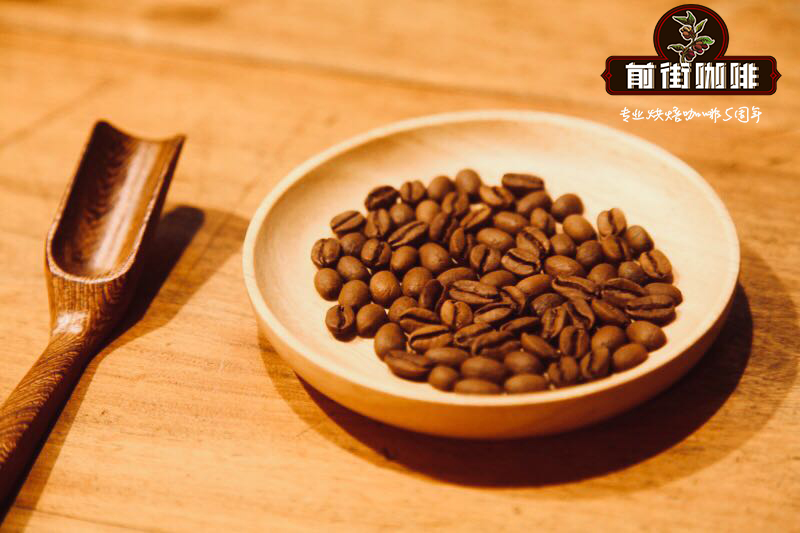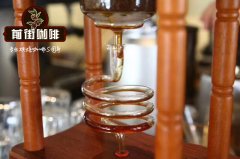Characteristics of washing Rwandan Coffee beans in Rwanda Ambarkanda Cooperative

Professional coffee knowledge exchange more coffee bean information please follow the coffee workshop (Wechat official account cafe_style)
Introduction:
Recently, Rwanda, a coffee-producing country that has been frequently concerned by the boutique coffee industry because of its excellent quality, has not had a smooth development of its coffee cultivation industry. Rwanda once had an annual output of 45000 tons of raw beans, but the genocide that killed millions of people in 1994 almost destroyed Lu's coffee industry, and coffee exports plummeted to close to zero.
Fortunately, since 2000, the United States Agency for International Development (USAID) has assisted the development of local farmers' cooperatives, coupled with the excellent local conditions that the country already has-as if most of the land in the country is located on a plateau above 1400 meters above sea level; so that Rwanda will not only gradually restore production, but also many of them are good things!
Because of the success of the cooperative movement, the existing pattern of production in Rwanda is quite similar to that in Ethiopia-regional cooperatives integrate a large number of small farmers to form the main force of coffee production, such as the Ambarkanda Cooperative and neighboring Musasa Co-op. Are good examples.
The Ambarkanda Cooperative, founded in 2005, is located about 30 kilometers northwest of the capital, Jijali, and now has about 2000 members and two washing plants. The cooperative is committed to leading farmers to produce high-quality berries with rich and complete contents in an organic way, soaking for 48 hours in the treatment plant, which is twice as long as the normal washing method, to increase the characteristics of raw beans, supplemented by scaffolding exposure to invest a lot of manpower to pick out bad beans that may be caused by soaking for a long time or other reasons. Coupled with the introduction of fair trade model, improve the income of farmers and the infrastructure of the village, so that farmers can afford education and medical services. Various efforts have started a virtuous circle, making farmers more willing and able to invest in the production of high-quality coffee, and the quality of coffee has increased year after year-for three consecutive years in 2010, 2011 and 2012, the Ambarkanda Cooperative is on the COE list of Rwanda, which is the most indicative affirmation!
Flavor: almonds and nuts, flower aroma, green grassland flavor, acidity and taste, melons and sweetness
The country
Rwanda
Producing area
Lusahi (Rusashi)
Producer
Ambarkanda Cooperative Society
Treatment plant
Lusashi processing plant
Treatment method
Water washing
Variety
Bourbon is dominant
Altitude
1600Murray 1800m
Harvest time
March-July
Authentication
Fair Trade (Fair Trade)
Important Notice :
前街咖啡 FrontStreet Coffee has moved to new addredd:
FrontStreet Coffee Address: 315,Donghua East Road,GuangZhou
Tel:020 38364473
- Prev

Rwanda COE bid 33 Cylon Landscape washing bourbon characteristics of Rwandan coffee beans
Professional coffee knowledge exchange more coffee bean information please follow the coffee workshop (Wechat official account cafe_style) [producing area] Cyondo [bean seed] bourbon species Bourbon [treatment] washing Washed [roasting] shallow roasting Light Roast [altitude] 1600-1800m [certification] one cup of excellence COE [level] competition bid 33rd [cup test]
- Next

Guatemala boutique manor coffee beans Cascagill Manor SHB flavor and taste characteristics?
Professional coffee knowledge exchange more coffee bean information please follow the coffee workshop (Wechat official account cafe_style) Guatemala boutique manor coffee beans Cascagill Manor SHB flavor and taste characteristics? The Finca El Cascajal estate in the New Oriente region of Guatemala mainly cultivates the Catuai variety of raw coffee beans. In order to protect the environment and produce better coffee
Related
- Detailed explanation of Jadeite planting Land in Panamanian Jadeite Manor introduction to the grading system of Jadeite competitive bidding, Red bid, Green bid and Rose Summer
- Story of Coffee planting in Brenka region of Costa Rica Stonehenge Manor anaerobic heavy honey treatment of flavor mouth
- What's on the barrel of Blue Mountain Coffee beans?
- Can American coffee also pull flowers? How to use hot American style to pull out a good-looking pattern?
- Can you make a cold extract with coffee beans? What is the right proportion for cold-extracted coffee formula?
- Indonesian PWN Gold Mandrine Coffee Origin Features Flavor How to Chong? Mandolin coffee is American.
- A brief introduction to the flavor characteristics of Brazilian yellow bourbon coffee beans
- What is the effect of different water quality on the flavor of cold-extracted coffee? What kind of water is best for brewing coffee?
- Why do you think of Rose Summer whenever you mention Panamanian coffee?
- Introduction to the characteristics of authentic blue mountain coffee bean producing areas? What is the CIB Coffee Authority in Jamaica?

